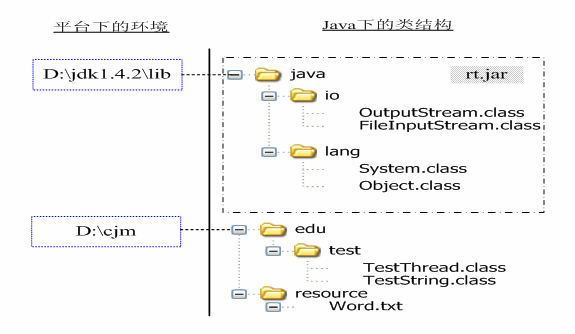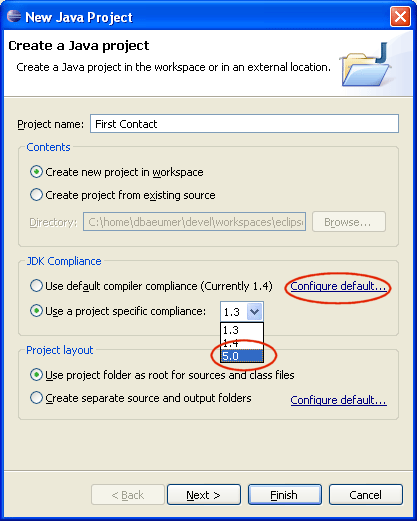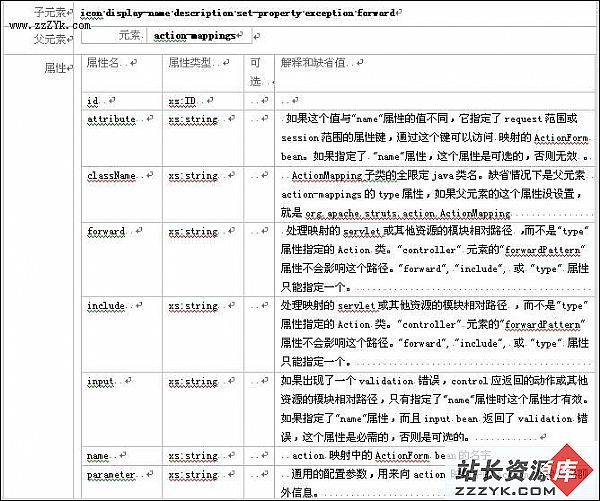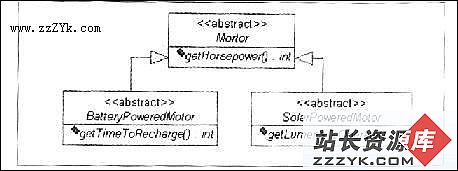当前位置:编程学习 > JSP >>
答案:
附有JSP源码(TextFileReader.jsp)及JavaBean (TextFileReader.java 使用前需加以编译)
我们使用了较早期的jswdk,所以我们可以确信你也可以直接使用这些代码。
TextFileReader.java是一个bean, TextFileReader.jsp则是jsp文件。如果你也使用d jswdk,并使用相同的library environment,可叫bean文件放在jswdk1-0eaexamplesjsp下的textfileaccess目录(你可以创建它),jsp文件放在jswdk1-0eaexamplesWeb-infjspbeanstextfileaccess目录,你也必须创建它。
我们使用的jsp文件并不包含太多的java代码,主要的代码放在bean中。由此我们也可以看到JSP和JavaBean的基本联系。
对于有经验的开发者:
在"header"信息中我们要申明要使用、识别哪一个bean,并设置其属性。
首先,我们导入bean,如果你的jswdk设置正确并已经将文件放在上述位置,那么找到 resource应该没有问题。page命令的意思是它将为整个jsp页面来进行导入。
<%@ page import ="textfileaccess.TextFileReader" %>
告诉编译器我们将使用一个bean,以及如何识别它,并进行初始化(instansiate)。 scope指明被申明的对象对当前页有效。
<jsp:useBean id="file_reader"class="textfileaccess.TextFileReader" scope="session"/>
然后我们决定要设置那些属性。这里是"FileName"。因为我们要使用Bean的setFileName 方法。所以Bean的名字必须包含。
<jsp:setProperty name="file_reader" property="FileName"/>
那就是header信息,现在我们开始实际的HTML页面。
<html>
<head><title>Read a text file</title></head>
<body bgcolor="white">
<font size=4>
现在我们开始编写一些Java脚本。首先检查文件名是否已经设置好。如果设好了,我们就显示文件,否则我们要转到另一个页面。
<%if(file_reader.getFileName() != "") { %>
file_reader是一个bean,所以我们可以用Java类来存取它。 :-)现在我们得到文件名称!
文件名称是: '<% out.println(file_reader.getFileName()); %>' :
文件内容,如果为空的话:
<%if (file_reader.getContent() != null) { %>
我们可以建立一个textarea (HTML) 并用getRows()和getColumns() 方法来调节到合适的位置。然后将文件内容放入。
<Form>
<TEXTAREArows=<%=file_reader.getRows()%>cols=<%= file_reader.getColumns()%>id= textarea1name= textarea1>< /FONT>
<%out.println(file_reader.getContent()); %>
</TEXTAREA>
</Form>
如果文件为空,那么一定是发生了错误,我们将得到出错信息:
<% }else { %>
<% out.println(file_reader.getErrorMessage()); %>
<% } %>
重置所有值并返回主页:
<% file_reader.reset(); %>
Do you want to <a href=>
<% }else { %>
文件名为空,则显示出错页面。
欢迎加入这里:'Read a file in JSP'
这个示例在textarea中简单地显示了文件内容?lt;p>
请填写你想看到什么文件。并确信键入了完整的路径。<p>
建立带textboxbutton的form。注意我们不必定义form的action,因为使用了同一个页面。并注意textbox中要填入文件名字。
<form method=get>< /FONT>
FileName? <input type=text name= FileName>< /FONT>
<input type=submit value="Show it!">
</form>
<% } %>
</font>
</body>
</html>
jsp文件完成了。在仔细看以下Bean中的Java代码。我假设你们中的大多数都熟悉java,否则你怎么会加入JSP的行列。:-)
**************JSP代码: TextFileReader.jsp
<!--
TextFileReader.jsp
Written by Martin Lindahl
Copyright 1999, w3it.com, distributed by JSPea
-->
<%@ page import = "textfileaccess.TextFileReader" %>
<jsp:useBean id="file_reader" class="textfileaccess.TextFileReader" scope="session"/>
<jsp:setProperty name="file_reader" property="FileName"/>
<html>
<head><title>Read a text file</title></head>
<body bgcolor="white">
<font size=4>
<% if (file_reader.getFileName() != "") { %>
The content of the file '<% out.println(file_reader.getFileName()); %>' :
<% if (file_reader.getContent() != null) { %>
<Form>
<TEXTAREA rows=<%= file_reader.getRows() %> cols=<%= file_reader.getColumns() %> id=textarea1 name=textarea1>
<% out.println(file_reader.getContent()); %>
</TEXTAREA>
</Form>
<% } else { %>
<% out.println(file_reader.getErrorMessage()); %>
<% } %>
<% file_reader.reset(); %>
Do you want to <a href=>
<% } else { %>
Welcome to the 'Read a file in JSP' example.
The example simply shows the file in a textarea.<p>
Please fill out what file you want to look at. Be sure to type the complete path.<p>
<form method=get>
FileName? <input type=text name=FileName>
<input type=submit value="Show it!">
</form>
<% } %>
</font>
</body>
</html>
**************Java Bean TextFileReader.java
package textfileaccess;
import java.io.*;
import java.awt.event.*;
import java.util.*;
/**
* TextFileReader is a bean that provides the basic functionality for
* reading a textfile.
*/
public class TextFileReader {
private String fileName, errorMessage;
private int columns, rowCount;
/**
* Constructs a TextFileReader.
*/
public TextFileReader() {
reset();
}
/**
* Resets all the variables in this bean.
*/
public void reset() {
fileName = "";
errorMessage = "";
columns = 0;
rowCount = 0;
}
/**
* Sets the error message, if an error occurs.
*/
public void setErrorMessage(String errorMessage) {
this.errorMessage = errorMessage;
}
/**
* Returns the error message, if any.
*/
public String getErrorMessage() {
return errorMessage;
}
/**
* Returns the filename.
*/
public String getFileName() {
return fileName;
}
/**
* Sets the filename.
*/
public void setFileName(String fileName) {
this.fileName = fileName;
}
/**
* Returns the amount of rows in the file.
*/
public int getRows() {
return rowCount;
}
/**
* Returns the maximum amount of columns in a row.
*/
public int getColumns() {
return columns;
}
/**
* Returns the content of the file in a String.
* If an error occurs, like if the file does not exists, null is returned.
*/
public String getContent() {
String content = "";
File file = new File(fileName);
if (!file.exists()) {
setErrorMessage("Error: The file '" + fileName + "' does not exists.");
return null;
}
else if (file != null) {
try {
// Create an BufferedReader so we can read a line at the time.
BufferedReader reader = new BufferedReader(new FileReader(file));
String inLine = reader.readLine();
while (inLine != null) {
if (inLine.length() + 1 > columns)
columns = inLine.length() + 1;
content += (inLine + System.getProperty("line.separator"));
inLine = reader.readLine();
rowCount++;
}
return content;
}
catch (IOException e) {
setErrorMessage("Error reading the file: " + e.getMessage());
return null;
}
}
else {
setErrorMessage("Unknown error!");
return null; <
上一个:jsp:plugin
下一个:jsp:useBean
- 更多JSP疑问解答:
- jsp新手求指导,不要笑!
- 如何让一个form提取的值传递给多个jsp?
- DW中,新建的html页面能否有jsp或php代码?
- jsp 如何限制表单,实现只能填写特定的数据。
- jsp 和javabean结合的程序有问题
- 从数据库里取出的数据如何传递到另外的jsp页面中
- 你好,ext嵌入那个jsp页面,是不是还需要加上一些插件啊,不太懂,麻烦你了。
- JSP不能处理所有问题吗?还要来一大堆的TLD,TAG,XML。为JSP 非要 Servlet 不可吗?
- 光标离开时全角转半角在jsp中怎么实现
- jsp 页面 打开 pdf 文件 控制大小 和 工具栏 能发份源码么 谢啦
- jsp页面点保存按钮,运行缓慢,弹出对话框提示
- jsp刷新页面如何不闪屏
- jsp 与html 的交互问题?
- jsp小数显示问题 例如 我在oracle 数据库中查询出来的是 0.01 但是在jsp页面上就显示成 .01 没有前面的0
- jsp中日历控件





